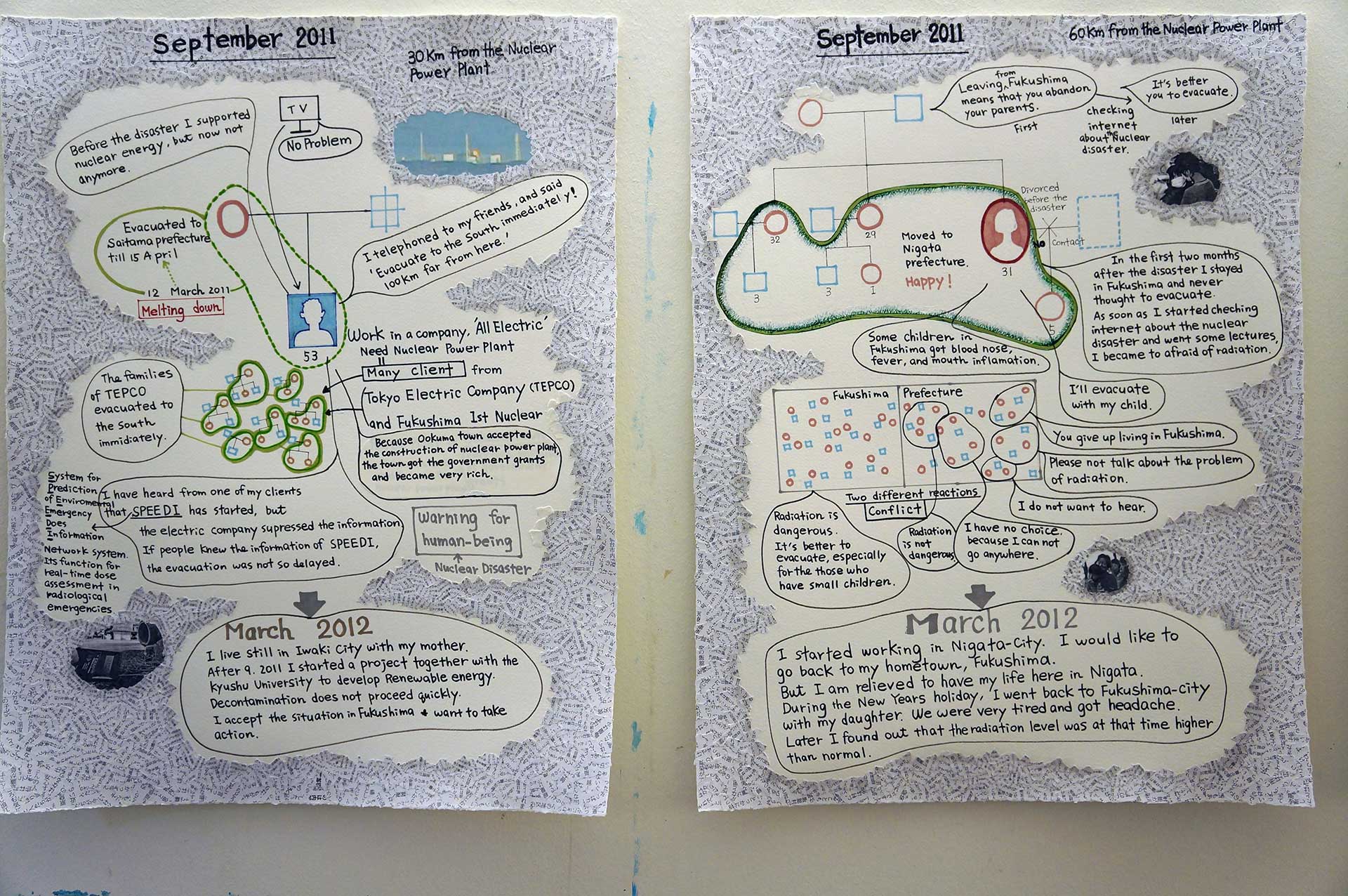
Keiko Sato
Forbidden, 2021 | Whispering in Fukushima, 2015
In 2013 reisde Keiko Sato naar Fukushima in Japan. Ze bezocht er gebieden waar ze als kind gewoond heeft, op zo’n 9 kilometer van de Fukushima Daiichi Kerncentrale, waar enkele jaren geleden de kernramp plaatsvond. Er kan nu niet meer geleefd worden, maar omdat haar oma daar begraven is kreeg ze toegang. Uit die ervaring is het idee van de installatie Forbidden voortgekomen. “Het is het landschap van mijn verbeelding en het impliceert het verlies van mijn thuisland,” aldus Sato. In een bredere notie is haar verdriet en verlies verbonden met de universele ‘eco-grief’ (het natuurverdriet) rondom het verlies van ‘ons huis’, de natuur en de afbreuk van ecosystemen.
Het werk Whispering in Fukushima is gebaseerd op interviews met mensen uit Fukushima na de kernramp, samengebracht in het boek 100 people, 100 stories van Iwakami Katsumi. De verhalen laten zien hoe mensen met elkaar communiceerden na de ramp, hoe de ramp verontrustende uitwisselingen tussen familieleden teweegbracht, en hoe het gebrek aan informatie van de overheid de mensen in Fukushima beïnvloedde.
Keiko Sato travelled to Fukushima in Japan in 2013. She visited areas where she lived as a child, about 9 kilometres from the Fukushima Daiichi Nuclear Power Plant, where the nuclear disaster happened a few years ago. Living there is no longer possible, but she was granted access because her grandmother is buried there. The idea of the installation Forbidden emerged from this experience. “It is the landscape of my imagination and it implies the loss of my homeland,” Sato said. In a broader notion, her grief and loss is linked to the universal ‘eco-grief’ surrounding the loss of ‘our home’, nature, and the degradation of ecosystems.
Whispering in Fukushima is based on interviews with people from Fukushima after the nuclear disaster that were compiled in the book 100 people, 100 stories by Iwakami Katsumi. The stories show how people communicated with each other after the disaster, how the disaster caused disturbing exchanges between family members, and how the lack of information from the government affected the people of Fukushima.